I acquired this pipe as part of a mixed box of estate pipes I picked up a few months ago. The large Billiard now on my worktable stood out from the lot, partly due to its size – the bowl is large, at 1.5” wide and 2” tall, with a 7/8” bore – and partly because the shape simply screamed “Classic English Billiard”.
The pipe had certainly been well enjoyed before it came to me. The tobacco chamber was thickly caked and the rim was completely hidden by a thick layer of lava. The rest of the stummel was in decent shape, but had its share of small dents and dings and other handling marks.
The stem was oxidized, and the bite area was discolored a rather sickly looking yellow/white. Tooth dents were visible under the discoloration, but I’d have to wait until I cleaned it up a bit to see exactly what I had to work with there.
The briar is stamped “Royal Coachman” in old-style font on the left shank. The right shank is marked with “Made in London” in a circle over “England”, and a shape number, “182”.
According to Pipephil.eu, the Royal Coachman marque is a seconds brand of Chapuis-Comoy, a company founded in 1925 by Englishman Henry Comoy (of Comoy’s of London) and his French Chapuis cousins. The Royal Coachman on my worktable clearly came from the London factory, so my initial impression of the pipe as an English Billiard was, strictly speaking, correct, though it was produced under the auspices of a French company.
To add a bit more confusion, the shape number, 182, is clearly a Comoy shape, identified in the chart on Pipedia.org as a “billiard, saddle stem, straight, large” – a somewhat awkward description, but factually accurate regarding the pipe in question. (The relationship between English and French pipe houses is as strong as it is confusing, as this interesting diagram , also from Pipephil, illustrates.)
Leaving the headache of brand ancestry for another day, this Royal Coachman is, or was, a good looking classic billiard under all that cake, tar and lava. Determined to find it again, I started the cleanup by scraping the worst of the crud off the rim of the bowl with the blade of my pen knife. The briar underneath isn’t in too bad shape. In this pic you can see a beveled inner rim beginning to emerge.
I continued working on the rim, topping the bowl lightly with 320 grit sandpaper to remove the last of the lava and expose the briar. My Castleford reamer excavated the copious carbon cake from the bowl, which turned out to be in excellent condition.
I tidied up the dents and gouges in both inner and outer rims by cleaning up the factory inner bevel and sanding a second, but much smaller, micro-bevel into the outer rim edge.
Work continued on the stummel with removing a quantity of tars and debris from the mortise and airway. I scraped out the worst of the gunk from the mortise using a square-ended needle file and completed the purge with pipe cleaners and cotton swabs dipped in alcohol.
The end of the day was approaching, so I ran a couple of pipe cleaners through the stem to make sure the airway was open before dropping the vulcanite into a bath of Oxyclean and warm water for an overnight soak.
The following morning, I scrubbed the exterior of the stummel with Murphy’s Oil Soap and a toothbrush to remove years of dust, wax and oils from the briar. The scrubbing exposed a small constellation of pinhead sized pits in the briar, which I drop-filled with CA glue, sanding the stummel smooth when the glue had cured.
Retrieving the stem from the Oxyclean soak, I scrubbed away the raised oxidation and dirt with 0000 steel wool and Magic Eraser and reevaluated the stem’s condition. The button and bite area were in a bit of a state, with deep tooth dents top and bottom, and a small Y-shaped crack at one end of the slot on the underside of the stem.
I used a combination of techniques to bring the stem back to life – heat to raise the dents, CA glue to seal and bond the crack, and CA mixed with charcoal powder to fill the deeper dents and rebuild missing parts of the button. Unfortunately, my pictures of the stem work have disappeared (one danger of working on more than one pipe at a time). The repairs went smoothly, though, as you will see in the final series of pictures below.
Both halves of the pipe were reunited for a trip to the buffer for a run of White Diamond compound and several coats of Carnauba wax to shine and protect the refurbished pipe. I made sure to buff lightly over the stamps to preserve their integrity.
The finished pipe, which I’d probably date to the 1960’s, is looking every inch an English-made Billiard, with its “Vintage Virgin” finish (I applied only a bit of mineral oil after sanding) showing a mix of interesting yet understated grain. This Royal Coachman seems to me to have a very English attitude, as if it’s saying “Yes, this is a good, quality pipe, but let’s not make a fuss about it.” – the sort of pipe that would show up in a Monty Python sketch, accessorizing a Very Proper Gentleman.
If you’d like to add this un-fussy oversized saddle billiard to your rack, you’ll find it in the DadsPipes Store now, with a reminder that, though Fathers Day is over, the Fathers Day 15% Off Sale continues for the entire month of June using Coupon Code Fathers15.
Thanks for joining me for another estate pipe restoration. Until next time, Happy Piping!
Here’s the finished pipe.


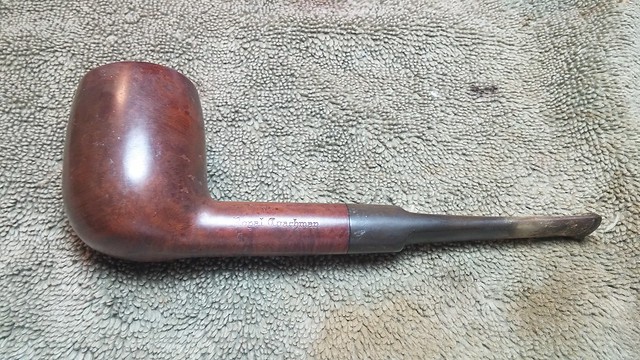
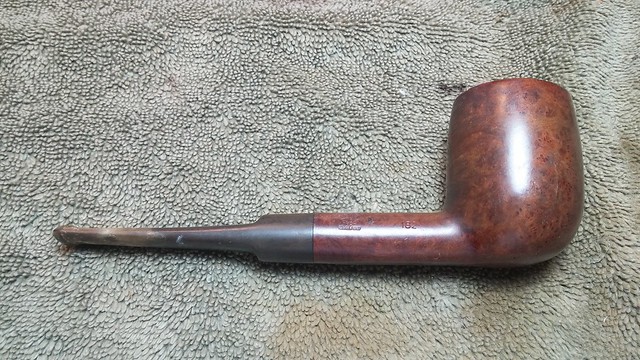
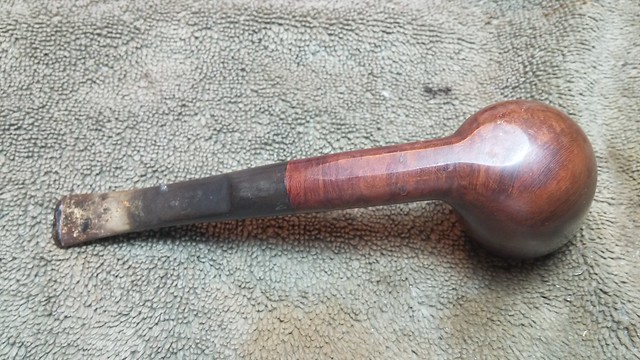
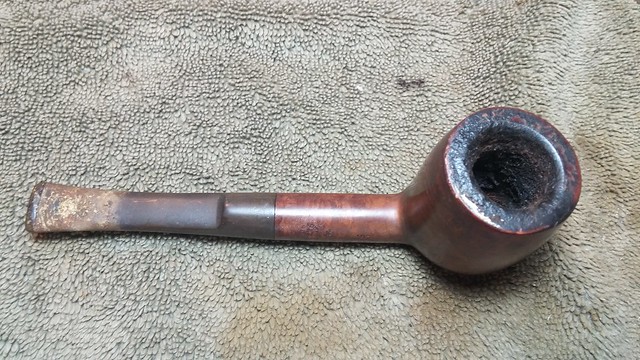


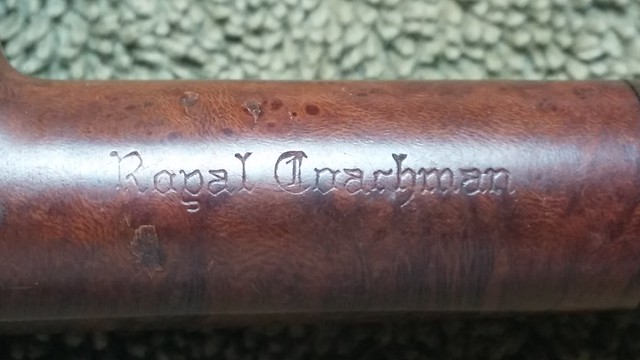
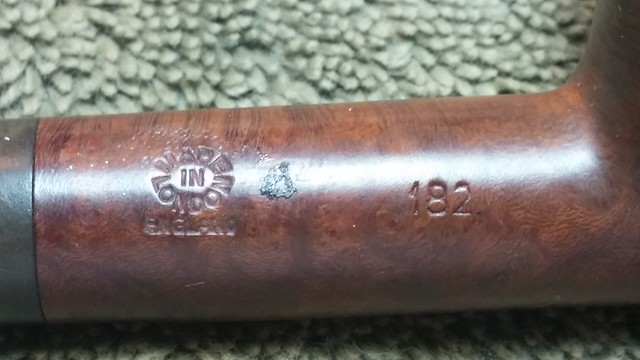
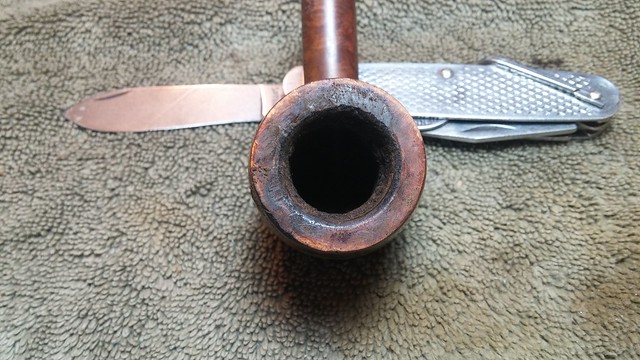
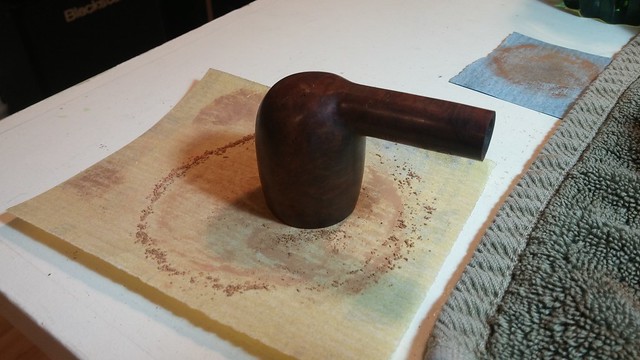

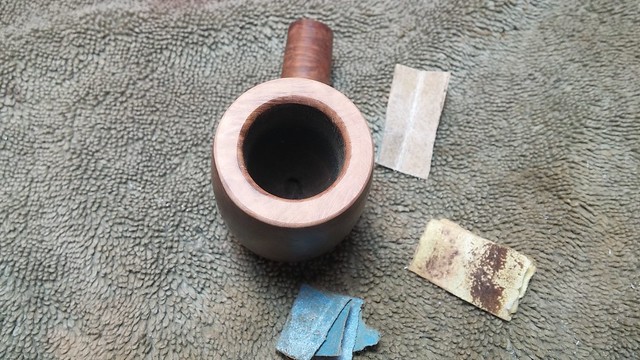

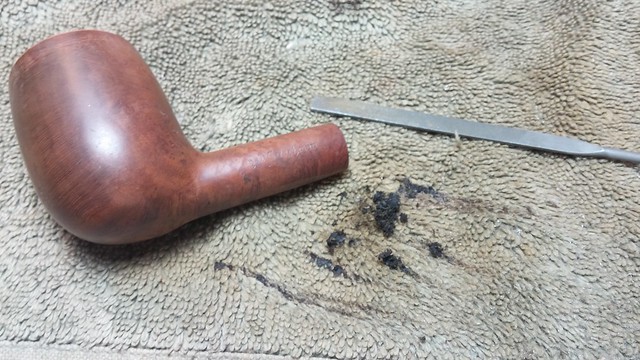

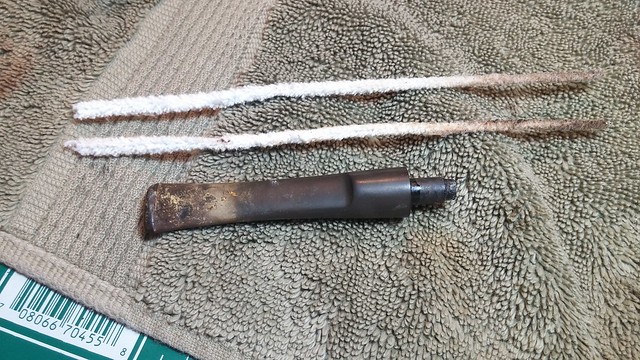
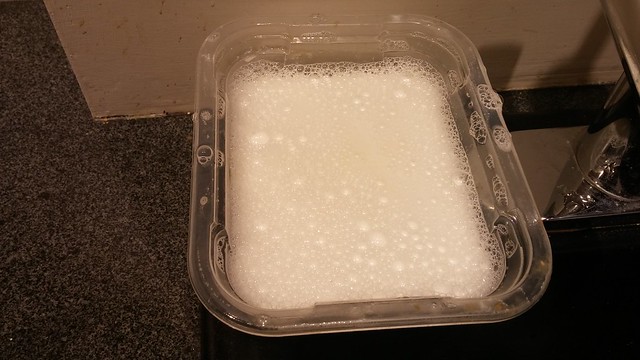

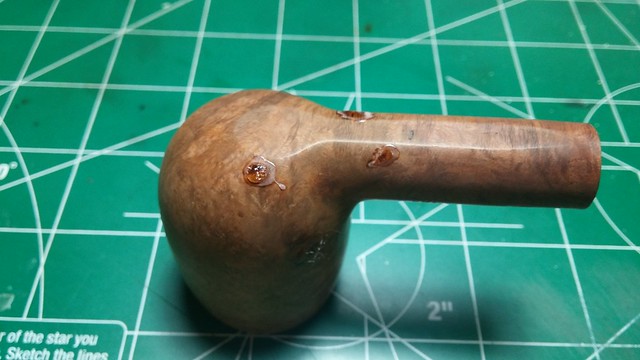
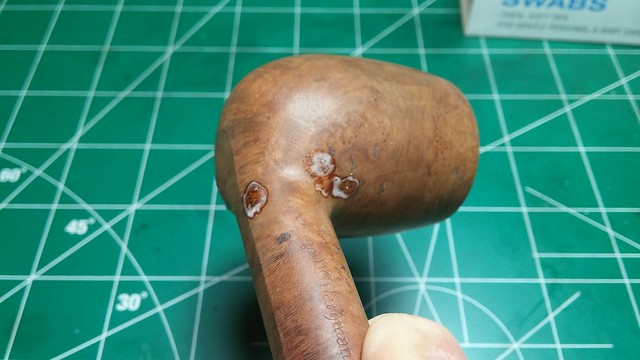
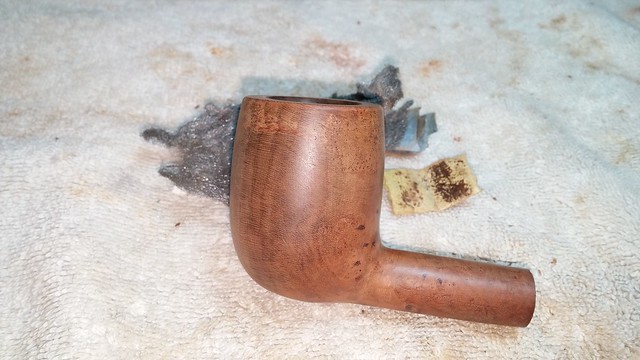
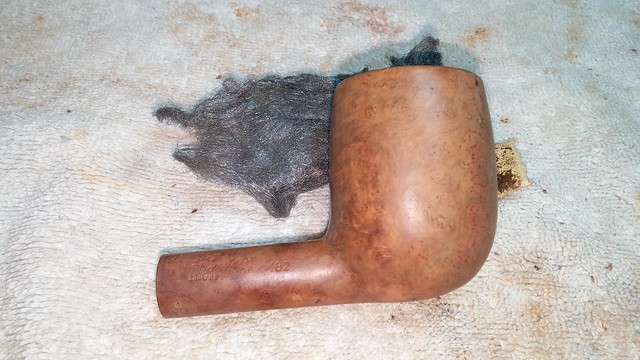
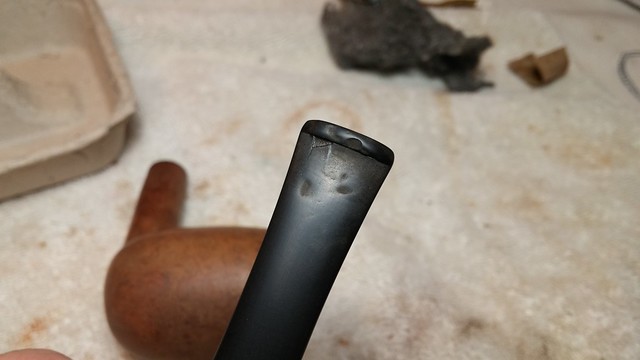

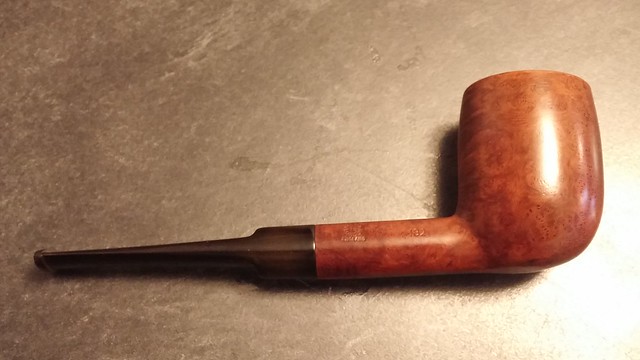
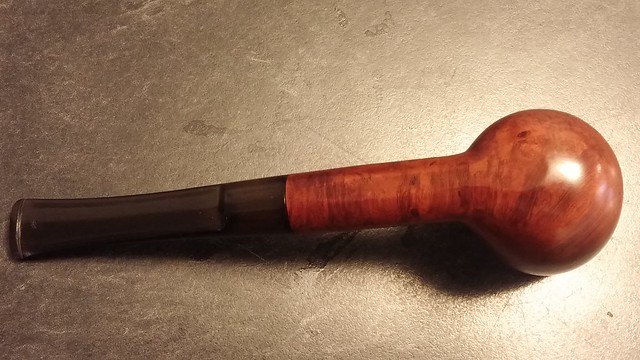
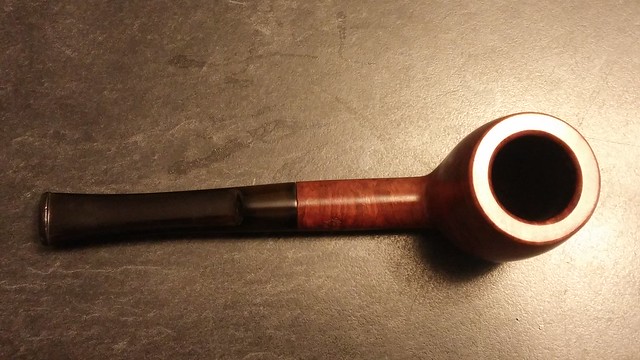
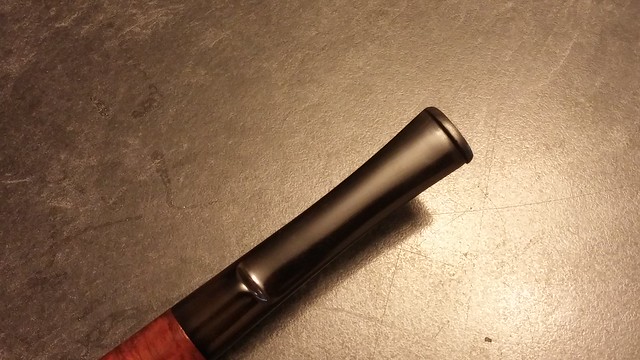
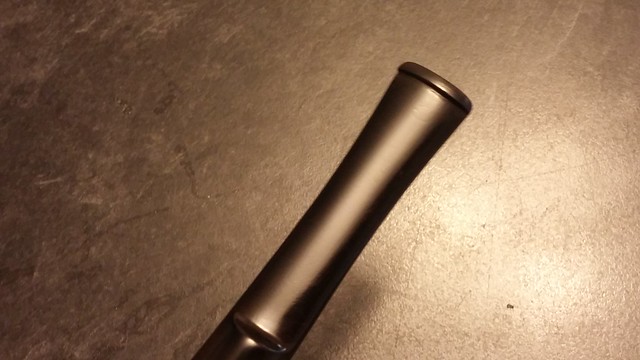
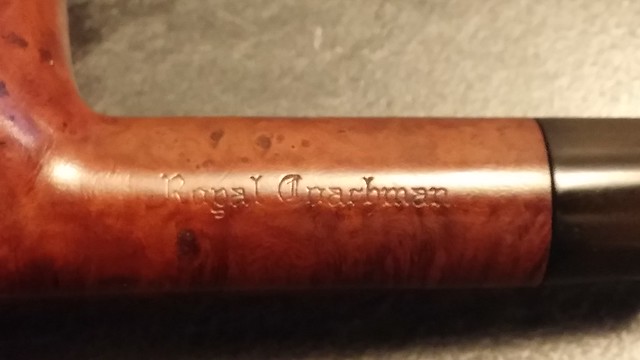
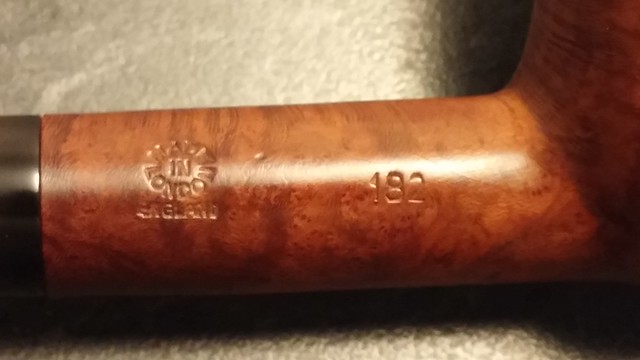
Very nice simple and elegant pipe. That’s the kind of pipes that appeal to me the most.Great restoration work.
That will make someone a fine pipe.
LikeLiked by 1 person
Thanks Troy. It’s a great choice for the piper that appreciates timeless shapes and long smokes. That bowl is at least ODA sized. 😀
LikeLike
I greatly enjoy following your restorations of your pipes. Beautiful work! Thank you for sharing.
LikeLiked by 1 person
That stem looks brand new. Great work, Charles!
LikeLiked by 1 person
Thanks David. It came up nicely.
LikeLike
That is definitely the Comoy’s COM. I thought that I had worked on a shape 182, but nope two 184’s. Nice job!
LikeLiked by 1 person
Thanks for the confirmation, Al. Backtracking pipe manufacturers can be a challenge sometimes! Luckily this one at least stayed in the Comoy family. 😃
LikeLike